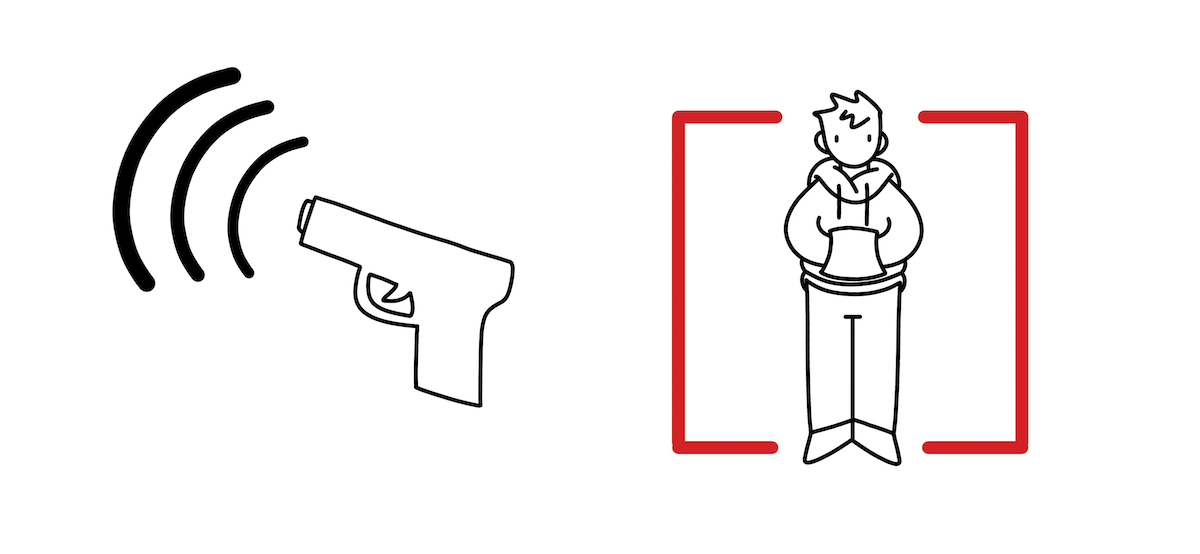Mayor Ted Wheeler recently voiced his support in moving forward with a pilot program to implement a gunshot-detection technology called ShotSpotter with the intent to reduce gun violence in Portland. At the same time, local stories of shootings—like the nine shootings occurring over a weekend at the end of August—seem to be popping up in the news with uncomfortable and increasing frequency.
While I question the accuracy of statistics from the Portland Police Bureau (PPB)—or anything coming from them, for that matter—shootings in Portland have seen a significant rise over the last couple of years, with 891 shootings happening from January through August of this year according to PPB data. The ShotSpotter technology would be the latest in a series of strategies to curb the rising gun violence in Portland, including the introduction of PPB’s Focused Intervention Team (FIT).
In January of this year PPB introduced FIT with a stated primary goal of responding to shootings in progress. It is important to note how the mission of FIT is quite similar to the Gun Violence Reduction Team (GVRT), which disbanded in 2020 due to criticisms of targeting the Black community of Portland.
The community oversight group of FIT—the Focused Intervention Team Community Oversight Group (FITCOG)—recommended the ShotSpotter technology back in July. ShotSpotter works by placing 20–25 acoustic microphones per square mile throughout specific locations in the city to triangulate and capture the time and location of sounds which could be gunfire. According to their website, “this data is used to locate the incident and is then filtered by sophisticated machine algorithms to classify the event as a potential gunshot.” This data is then confirmed or denied by acoustic experts who work at the company’s Incident Review Center. If the noise is confirmed to be gunfire by these acoustic experts, an alert gets sent to the local police department in a process which they claim takes under 60 seconds.
Now that we have a rough idea of what the company claims its technology can do, let’s dive a bit deeper to see why bringing ShotSpotter technology to Portland is a terrible idea, despite the increasing number of shootings.
The first problem with the technology is its accuracy in detecting actual gunfire. While the company claims to save lives by helping assist local police departments by working in a partnership with their technology, a recent study done by Chicago’s Office of Inspector General shows some startling data. They analyzed all ShotSpotter alert data in the city of Chicago from Jan. 1, 2020, to May 31, 2021, revealing that of the 41,830 alerts which prompted a police response, only 4,556 of those resulted in the evidence of a gun-related incident, representing a 9.9% rate of alerts leading to an assumed outcome.
This highlights another problem of the technology—the communities and neighborhoods where this technology would be set up. FITCOG suggests the sensors be set up in areas with a high risk of gun violence, which seems reasonable on the surface until you realize these areas are likely to already have a higher police presence. This raises questions about the demographics of these chosen neighborhoods.
Adding to this problematic mix is how dangerous it will be for anyone in the area of an alert when PPB comes rolling through even more amped up than usual. Arriving at the scene of an alert ready to engage would potentially be dangerous for anyone who is having a mental health crisis in the area or anyone with a cell phone, a toy or any other object in their possession which police could mistake for a gun. This also creates the possibility of PPB arriving at the location of an alert and treating anyone walking or driving in the area as a threat, which could lead to searches of persons or vehicles which they deem as suspicious.
With the 9.9% rate mentioned above, we can reasonably assume nine out of 10 police responses to an alert would not only yield a possible false alert, but would terrorize residents in the community with an increased chance of PPB harassment and them possibly shooting an unarmed person—all thanks to some acoustic expert mistaking a car backfiring for a gunshot.
Putting this technology in the hands of the Portland Police Bureau is just a bad idea all around. A Department of Justice (DOJ) report which came out last year showed how the city of Portland was out of compliance with six of the seven sections outlined in a 2014 agreement with the DOJ and the city of Portland. Most of these noncompliances have to do with PPB violating use-of-force policies—including failures to investigate and penalize PPB officers who have used inappropriate force against the public.
In the first civil suit against the city of Portland over police actions and behavior during 2020, three officers took the stand, including “an officer [who] appeared to not fully understand the bureau’s use-of-force directives,” revealing an unsurprising confirmation of how systemic being out of compliance with the DOJ agreement truly is.
These officers not fully understanding these use-of-force directives raises further concerns, because whether they fully understand the directives or not, police and their unions will continue to fight with everything they have to make sure they are never held accountable for their violent use of force—even when those actions go against their own policies.
Adding ShotSpotter into the mix not only expands the ever growing surveillance state, it also represents a societal failure in wasting more money on toys for police, which will only exacerbate their ability to cause harm to the community while remaining unaccountable themselves.
It hardly seems wise to implement ShotSpotter in the first place, but pairing this technology with a police bureau which shows evidence of failing to comply with use-of-force policies seems like an incredibly shortsighted and dangerous move. I propose the city of Portland use the money they were going to use for this technology—along with any other increases they are thinking of adding to PPB’s budget in the future—for the Portland Street Response and other programs like it which prioritize de-escalation and treating people in crisis as the human beings they are. The city of Portland does have an increase in gun violence to reckon with, but this questionable technology being used by an out-of-compliance police force is a baffling and dangerous decision.
KATU reported that while there is no timeline for when the ShotSpotter pilot program will begin, a proposal will be submitted to the City Council which will allow community input. I hope we all take the opportunity to voice our opposition to this, because there are many solutions to consider, but ShotSpotter isn’t it.






